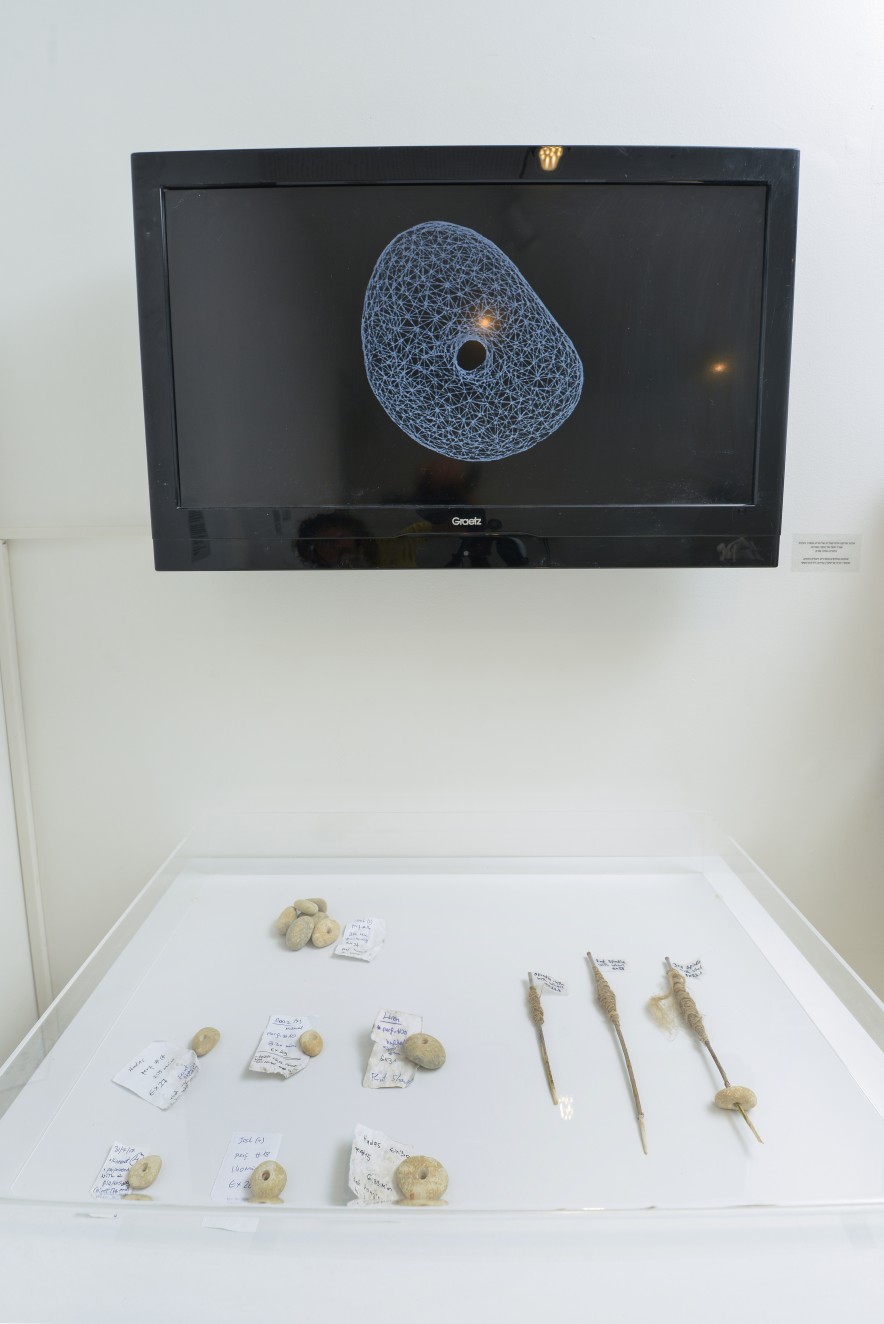12,000-year old stones from the Nahal-Ein Gev II dig site in northern Israel may be spindle whorls, a very early evidence of wheel-like technology
Stones were likely used by early human cultures as spindle whorls to turn fibers into yarn
A collection of perforated pebbles from an archaeological site in Israel may be spindle whorls, representing a key milestone in the development of rotational tools including wheels, according to a study published November 13, 2024 in the open-access journal PLoS ONE by Talia Yashuv and Leore Grosman from the Hebrew University of Jerusalem, Israel.
Donut-shaped objects connected to a bar, forming a wheel and axle, are a key invention springboarding technological development and are commonly associated with Bronze Age carts. Spindle whorls, round, weighted objects that are attached to a spindle stick, form a similar wheel-and-axle-like device to help the spindle rotate faster and longer, enabling it to efficiently gather up fibers such as wool or flax and spin them into yarn.
The stones studied in the new paper, recovered from the Nahal-Ein Gev II dig site in northern Israel, date back approximately 12,000 years, during the important transition to an agricultural lifestyle and the Neolithic period, long before the cart wheels of the Bronze Age. Introducing an innovative method for studying perforated objects, based on digital 3-D models of the stones and their negative holes, the authors describe more than a hundred of the mostly-limestone pebbles, which feature a circular shape perforated by a central hole. Due to this structure and composition, the authors of the new paper deduce that the stones were likely used as spindle whorls — a hypothesis also supported by successfully spinning flax using replicas of the stones.
This collection of spindle whorls would represent a very early example of humans using rotation with a wheel-shaped tool. They might have paved the way for later rotational technologies, such as the potter’s wheel and the cart wheel, which were vital to the development of early human civilizations.
The authors add: “The most important aspect of the study is how modern technology allows us to delve deep into touching the fingerprints of the prehistoric craftsman, then learn something new about them and their innovativeness, and at the same time, about our modern technology and how we’re linked.”
![Spinning methods. (a) Manual thigh-spinning [64]; (b) Spindle-and-whorl “supported spinning” [68]; (c) “drop spinning” [66]; (d) the experimental spindles and whorls, the 3D scans of the pebbles and their negative perforations. The bottom pictures show Yonit Kristal experimenting spinning fibres with replicas of the perforated pebbles, using supported spinning and drop spinning techniques (photographed by Talia Yashuv). Credits: Yashuv, Grosman, 2024, PLOS ONE, CC-BY 4.0](https://www.classicult.it/wp-content/uploads/2024/11/Nahal-Ein-Gev-II-in-Israel-spindle-whorls-Low-Res_journal.pone_.0312007.g007.jpg)
12,000-Year-Old Spindle Whorls Uncovered in the Jordan Valley
A new study by researchers from Hebrew University has identified 12,000 years old spindle whorls — early tools used to spin fibers into yarn. This discovery, recovered from the Nahal-Ein Gev II dig site in northern Israel, provides the earliest evidence of wheeled rotational technology in the Levant, offering insights into the technological advancements of the Natufian culture during the important transition to an agricultural lifestyle.
[Hebrew University of Jerusalem]– The study, recently published in PLoS ONE, was led by Talia Yashuv and Professor Leore Grosman from the Computational Archaeology Laboratory at the Hebrew University’s Institute of Archaeology. Introducing an innovative method for studying perforated objects, based on digital 3-D models of the stones and their negative holes, the authors describe more than a hundred of the mostly-limestone pebbles, which feature a circular shape perforated by a central hole. Due to this structure and composition, the authors deduce that the stones were likely used as spindle whorls — a hypothesis also supported by successfully spinning flax using replicas of the stones.
Spindle whorls, round, weighted objects that are attached to a spindle stick, form a similar wheel-and-axle-like device to help the spindle rotate faster and longer, enabling it to efficiently gather up fibers such as wool or flax and spin them into yarn. This discovery marks the earliest known evidence of this fast-spinning technology in the Levant, predating previously known textile tools by 4,000 years and highlighting an important stage in human innovation. Professor Grosman notes:
“These Natufian perforated stones are actually the first wheels in form and function — a round object with a hole in the centre connected to a rotating axle, used long before the appearance of the wheel for transportation purposes”.
This early use paved the way for future wheel-based rotational innovations, key advancements that revolutionized human technological history such as the potter’s wheel and the cart wheel that appears 6,000 years ago.
The Nahal Ein Gev II site, with its permanent structures, lime-plastered burials, and diversified tools, provides a rare glimpse into the end of the Natufian culture and the transition from a hunter-gatherer society to an agricultural one. The new findings underscore how the technological innovations are an important driving force in the Neolithization processes. This study not only expands our understanding of technological innovation but also showcases how advanced research tools reveal insights into prehistoric craftsmanship, underscoring humanity’s enduring drive for innovation.
Bibliographic information:
Yashuv T, Grosman L (2024) 12,000-year-old spindle whorls and the innovation of wheeled rotational technologies, PLoS ONE 19(11): e0312007, DOI: https://doi.org/10.1371/journal.pone.0312007
Press release from the Hebrew University of Jerusalem






